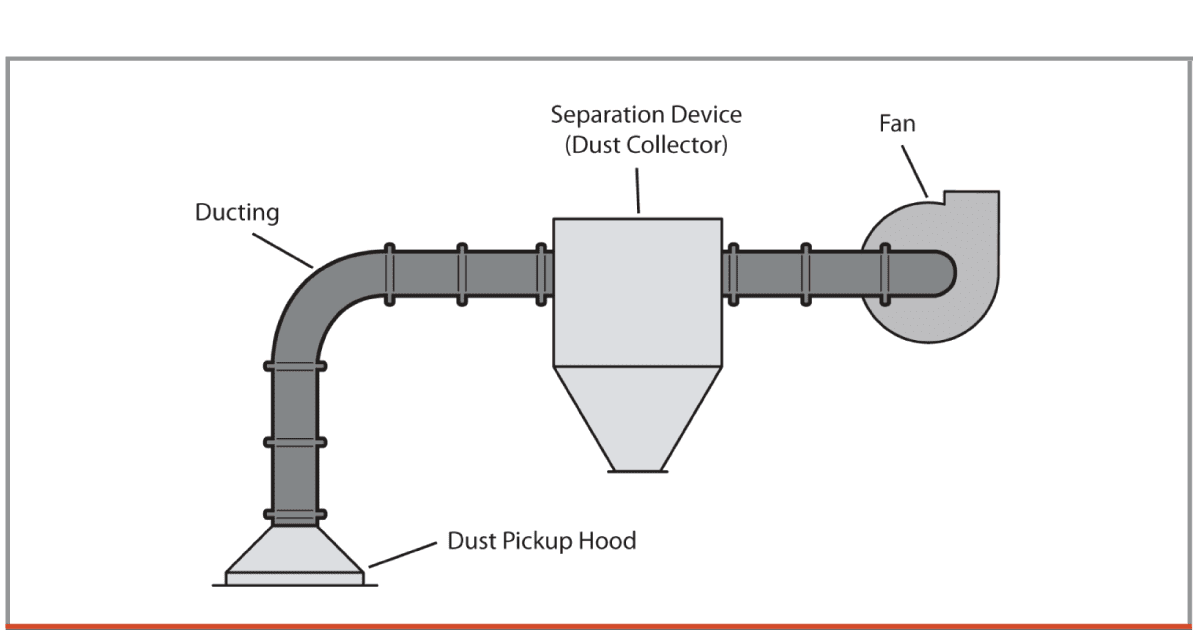
Effective Dust Control Measures for Industrial Facilities: Ensuring a Clean and Safe Environment
General Introduction
Industries play a vital role in driving economic growth and technological advancements. However, these environments often generate significant amounts of dust and particulate matter, posing various risks to both workers and equipment in the industry. Implementing effective dust control measures is essential for development of a clean and safe working environment. In this blog, we will be exploring the importance of dust control, key techniques for dust suppression, and the benefits they offer.
Understanding the Importance of Dust Control
Dust control in industrial facilities & buildings is crucial for several reasons. Primarily, airborne dust particles can lead to respiratory issues among factory workers, such as allergies, asthma, and other respiratory diseases. Secondly, excessive accumulation of dust particles can impair visibility, leading to accidents and decreased productivity. Moreover, dust can settle on machinery and equipment, causing malfunctions, reducing their lifespan, and increasing maintenance costs.
Identifying Common Dust Sources
Before implementing dust control measures, it is important to identify the sources of dust within the industrial facility. Common dust sources in industrial environments include:
1. Material Handling and Processing: Operations involving the handling, crushing, grinding, or transferring of materials, such as mining, construction, and manufacturing processes.
2. Vehicle Movements: Dust generated by the movement of trucks, forklifts, and other vehicles within the industrial facility.
3. Combustion Processes: Dust produced by combustion-related activities, such as power generation, incineration, and industrial boilers.
Dust Control Techniques
1. Source Control
The most effective approach to dust control is to prevent its generation at the source. This can be achieved through various methods:
a. Enclosure and Containment: Enclosing dusty processes and equipment within structures or using barriers can prevent dust from dispersing into the air.
b. Local Exhaust Ventilation (LEV): Installing LEV systems captures dust directly at the source, using hoods, ducts, and filters.
c. Wet Suppression: Spraying water or a wetting agent onto dusty surfaces helps to weigh down and suppress dust particles.
2. Dust Collection Systems
Dust collection systems are essential for capturing and removing airborne particles. The two primary types of dust collectors used in industrial facilities are:
a. Cyclone Separators: Cyclones use centrifugal force to separate dust particles from the air stream, collecting them in a separate chamber.
b. Baghouses: Baghouses utilize fabric filters to capture dust particles as air passes through them. The collected dust is periodically removed from the bags.
3. Dust Suppression
In addition to controlling dust at the source and collecting airborne particles, dust suppression techniques further help in minimizing dust dispersion. These methods include:
a. Water Sprays: Spraying water or mist over dusty areas helps to reduce dust by increasing the moisture content, preventing particles from becoming airborne.
b. Chemical Dust Suppressants: Applying chemical agents to dust-prone surfaces can bind dust particles together, preventing them from becoming airborne.
c. Dust Barriers: Installing physical barriers, such as curtains or screens, can prevent dust from spreading to other areas of the facility.
Benefits of Effective Dust Control
1. Improved Worker Health and Safety: Implementing effective dust control measures significantly reduces the risk of respiratory illnesses and related health issues among workers. By minimizing airborne dust particles, workers can breathe clean air, leading to a healthier workforce and a safer working environment overall.
2. Enhanced Equipment Performance: Excessive dust accumulation on machinery and equipment can hamper their performance and lifespan. By implementing dust control measures, such as regular cleaning and preventive maintenance, the risk of equipment malfunctions and breakdowns due to dust is greatly reduced. This leads to increased efficiency, reduced downtime, and lower maintenance costs in the long run.
3. Regulatory Compliance: Industrial facilities are subject to various environmental and occupational health regulations regarding dust control. By implementing effective dust control measures, facilities can ensure compliance with these regulations, avoiding potential fines, penalties, and legal issues. Maintaining a clean and safe working environment demonstrates a commitment to environmental responsibility and the well-being of workers.
4. Increased Productivity: Dust control measures contribute to improved visibility within the facility, allowing workers to perform their tasks with greater efficiency and accuracy. Reduced dust levels also minimize the risk of accidents and injuries, further enhancing productivity. A clean and well-maintained environment fosters a positive work atmosphere, promoting employee morale and motivation.
5. Environmental Protection: Dust generated by industrial activities can have adverse effects on the surrounding environment. It can contaminate soil, water bodies, and nearby ecosystems. Effective dust control measures, such as dust collection systems and suppression techniques, help minimize the release of harmful particulates into the environment, reducing the ecological impact of industrial operations.
Wrapping Up
In conclusion, ensuring effective dust control in industrial facilities is of paramount importance. By implementing source control techniques, employing dust collection systems, and utilizing dust suppression methods, facilities can create a clean and safe working environment for their employees. The benefits of effective dust control include improved worker health and safety, enhanced equipment performance and longevity, regulatory compliance, increased productivity, and environmental protection. By prioritizing dust control, industrial facilities can optimize their operations, protect their workforce, and contribute to a sustainable and responsible approach to industrial practices.




